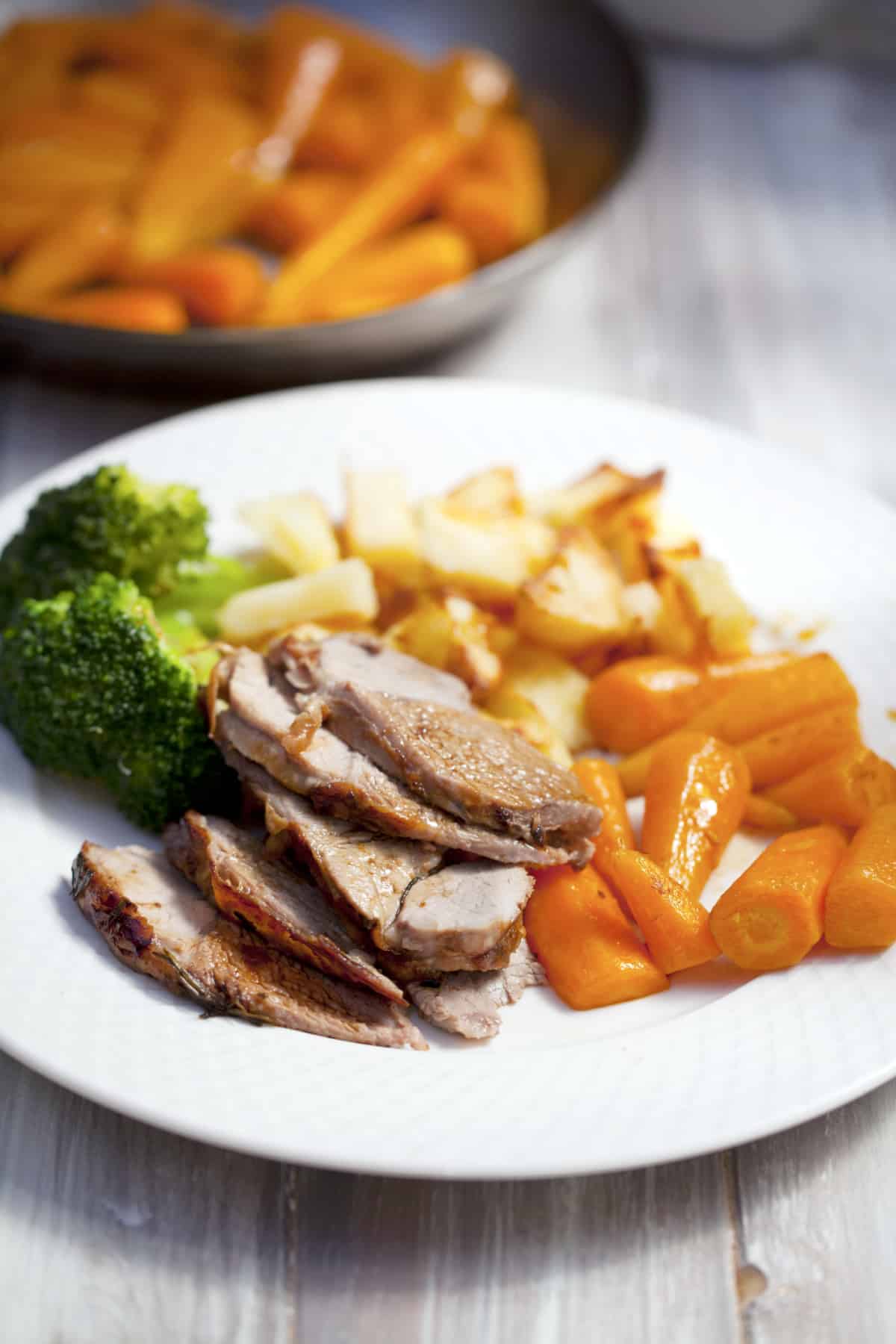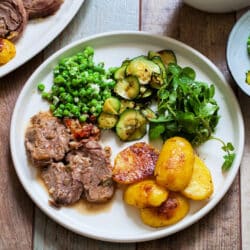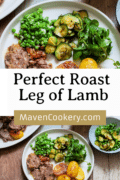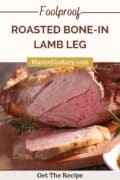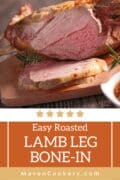While many dishes can grace your table for your Easter feast, few can compare to the show-stopping centerpiece of a beautiful roast leg of lamb. This roast leg of lamb recipe is not only simple to prepare, but it’s virtually foolproof. Be sure to check out the lamb roasting time and temperature guide below for a perfect Easter dinner.
With just a few key ingredients and some easy-to-follow steps, you’ll have a succulent and juicy lamb leg that’s perfect for your dinner party or holiday celebration. To roast a leg of lamb is easier than you may think.
Pair the roast lamb with roasted potatoes, roasted asparagus, or sauteed green beans and you have an easy, fabulous crowd-pleasing dinner. So, let’s dive into why this roasted leg of lamb recipe is a great choice for your Easter celebration.
🥘 Ingredients
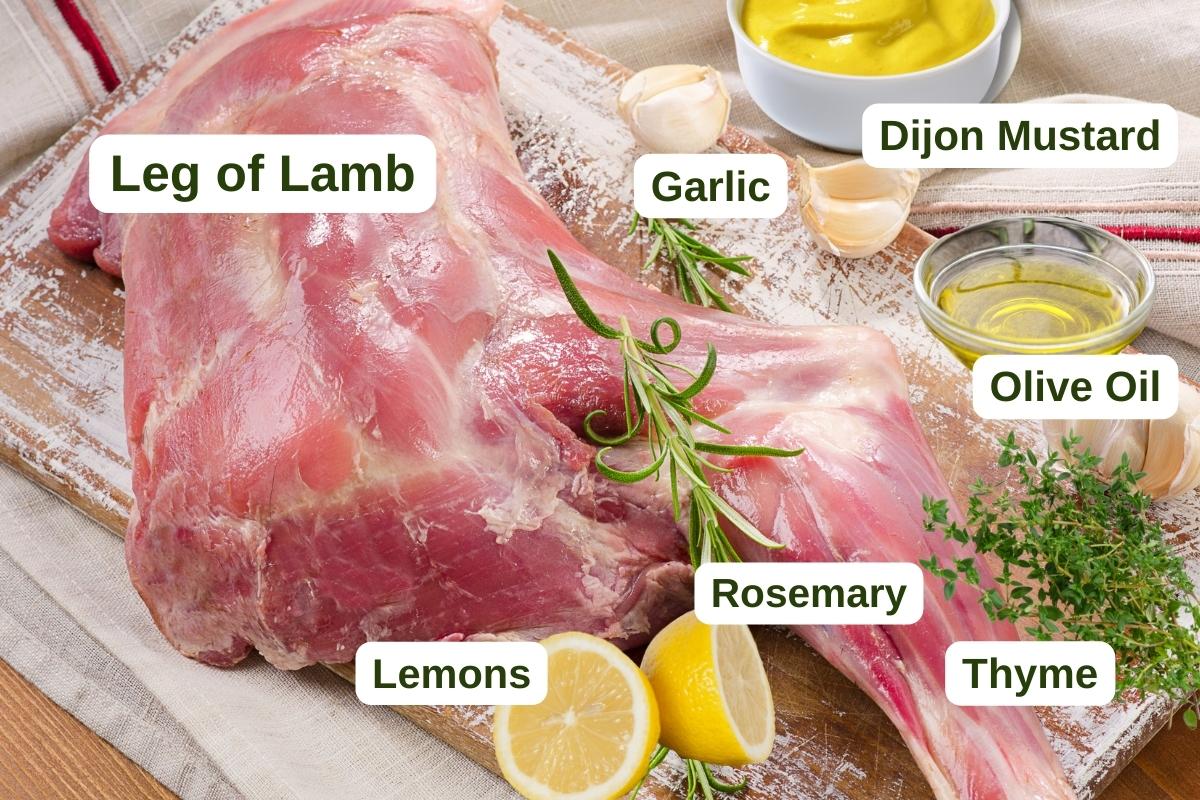
Bone-in leg of lamb is my choice for this dish because the bone adds flavor. Additionally the bone-in leg give the presentation that wow factor. Instead of a whole leg of lamb, a half leg of lamb is a great choice because the lamb shank is removed. The lamb shank is better when braised.
Fresh garlic cloves are the perfect pairing for lamb. They add a pungent, savory flavor to the lamb and complement the other herbs.
Dijon mustard adds a tangy, slightly spicy flavor to the lamb, and also helps to form a nice crust on the exterior of the meat during roasting.
Fresh rosemary is a fragrant herb that adds a distinctive, piney flavor to the lamb. It also pairs well with garlic, making it a popular herb in many lamb recipes.
Fresh thyme has a subtle, earthy flavor that adds a nice aroma to the lamb as it cooks.
Olive oil helps to brown and crisp the exterior of the lamb during roasting, and also helps to keep the meat moist.
Kosher salt and freshly ground black pepper.
Lemon juice adds the final citrus notes to the lamb complementing the savory flavors.
🧂 Substitutes
Bone-in vs boneless lamb. You can substitute boneless lamb in the recipe if you prefer. Consider the following before making your choice.
- A bone-in leg of lamb will
- have more flavor and will take a bit longer to cook than boneless lamb roasts. The reason bone-in lamb takes longer to cook is because there is more connective tissue and the bone acts as an insulator.
- is more difficult to carve.
- give a much more impressive presentation because of the bone.
- will have different degrees of doneness because of it’s irregular shape.
- A boneless leg of lamb roast
- may not have quite as much flavor as a bone-in leg.
- will cook more quickly.
- will be much easier to carve.
- will get done consistently throughout because it is evenly rolled.
Minced garlic can be used instead of whole cloves of garlic. 1 tablespoon of minced garlic equals 6 cloves.
Dijon mustard is ideal for this recipe, but you can use these substitutes for Dijon mustard if you need to.
I do not recommend substituting dried herbs for rosemary and thyme. They just do not add the right flavors. If you are planning a top-notch roasted leg of lamb, using fresh herbs is the best choice.
🔪 How To Roast a Leg of Lamb
- Pull the lamb out of the refrigerator and let stand for about 30 minutes or until it reaches room temperature. Trim any excess fat.
- Meanwhile, preheat the oven to 425 degrees F. The best way to give our lamb a nice outer sear is starting it at higher temperatures.
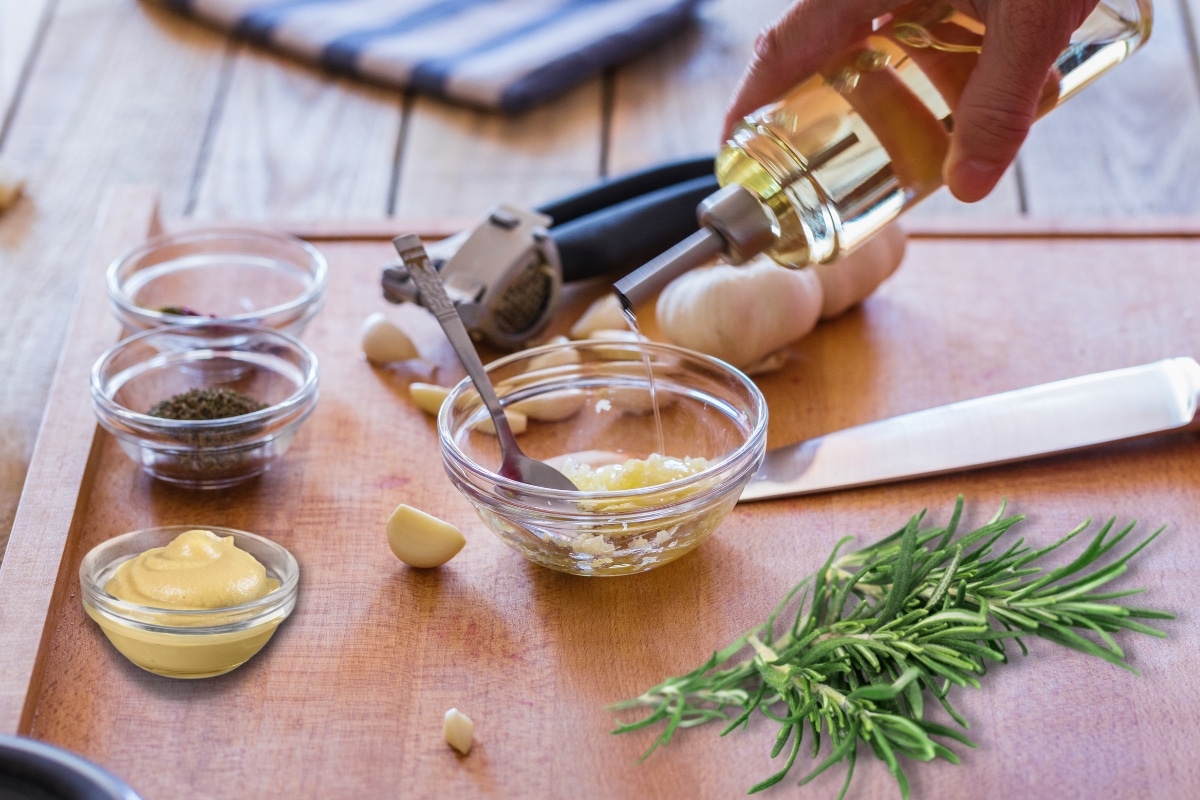
- Mince the garlic and in a small bowl blend with the Dijon mustard, rosemary leaves, and thyme leaves into a coarse paste.
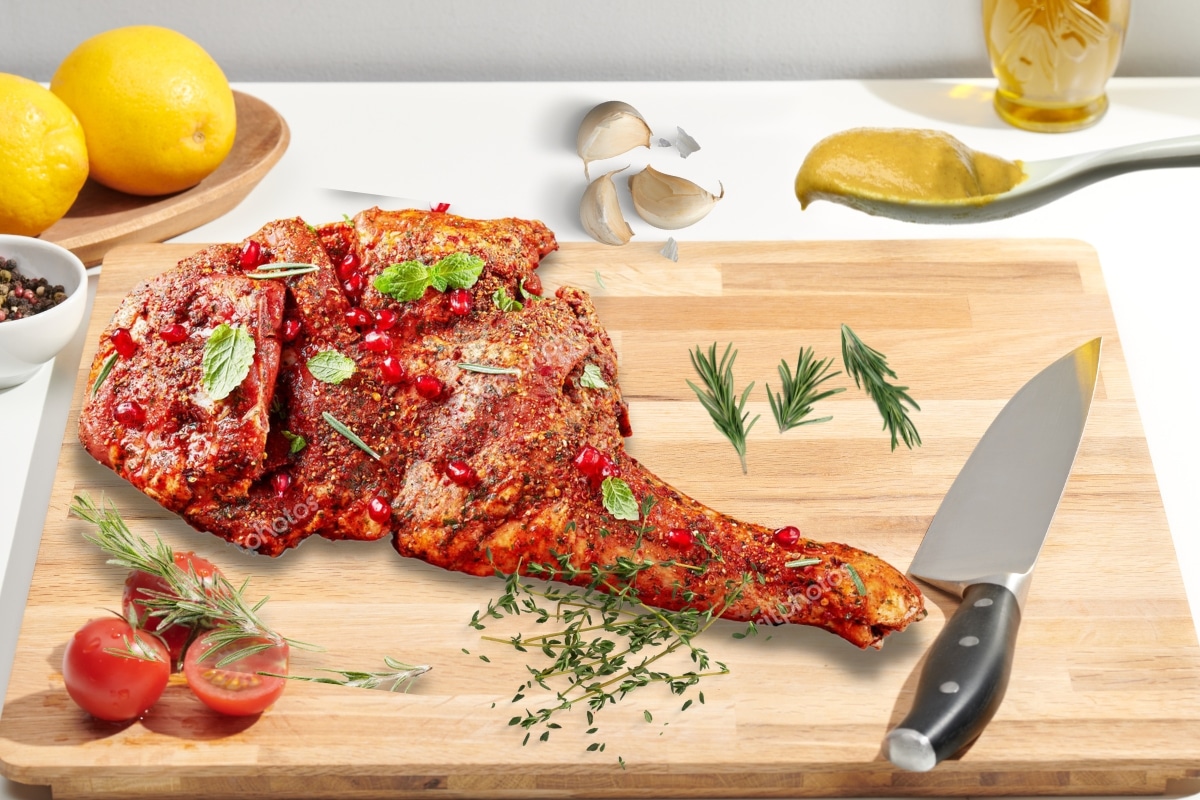
- Using a sharp knife, make small slits into the top of the leg. Rub the garlic mixture into the slits on the leg and all over the leg.
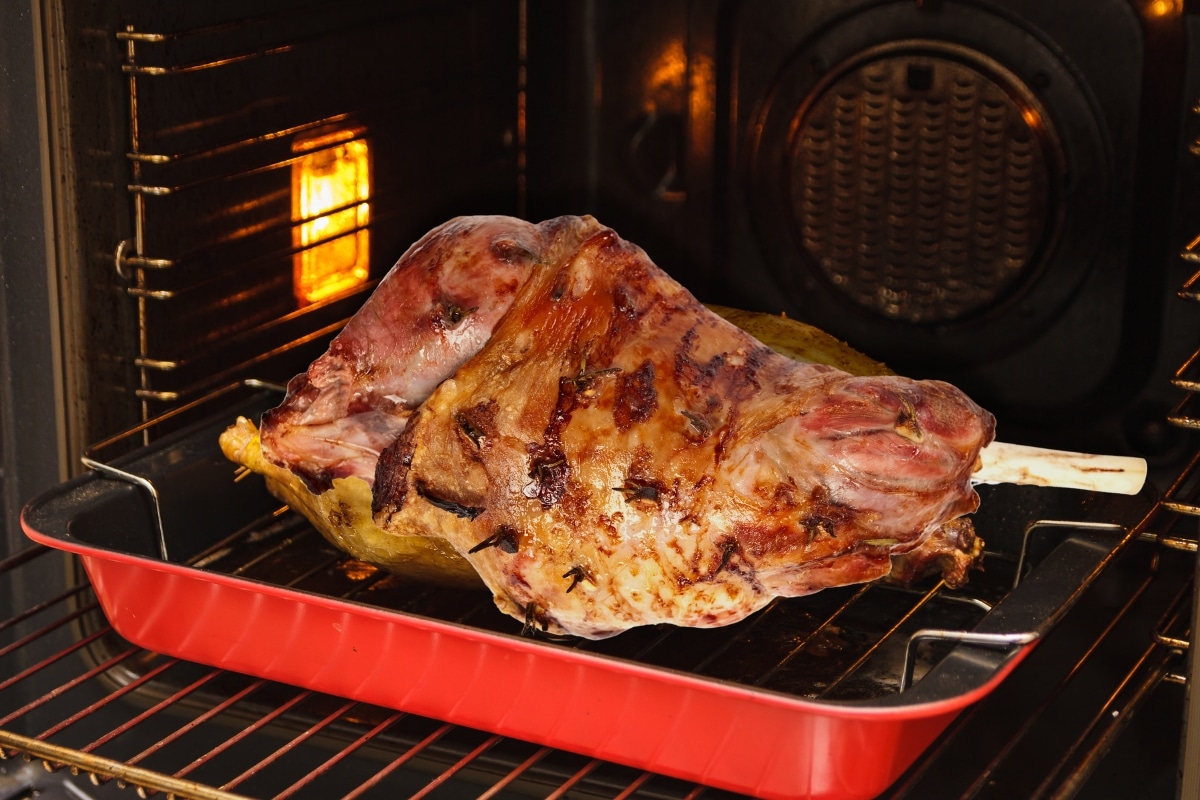
- Place the lamb fat side up, on a wire rack in a shallow roasting pan. Roast 15 minutes. Then lower temperature to 325°F and roast about 20 minutes per pound.
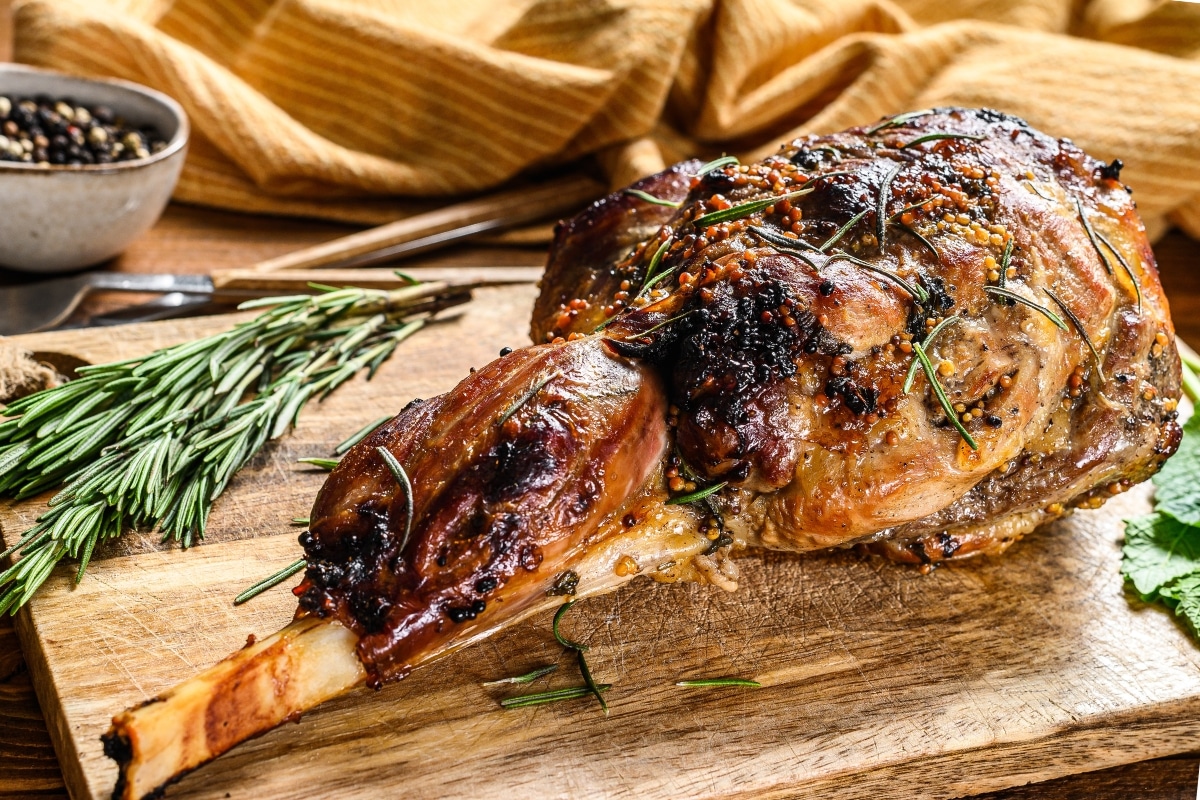
- Check the cooking time and temperature in the following chart for your desired doneness. Then remove from the oven and let rest, tented with foil for 15 minutes.
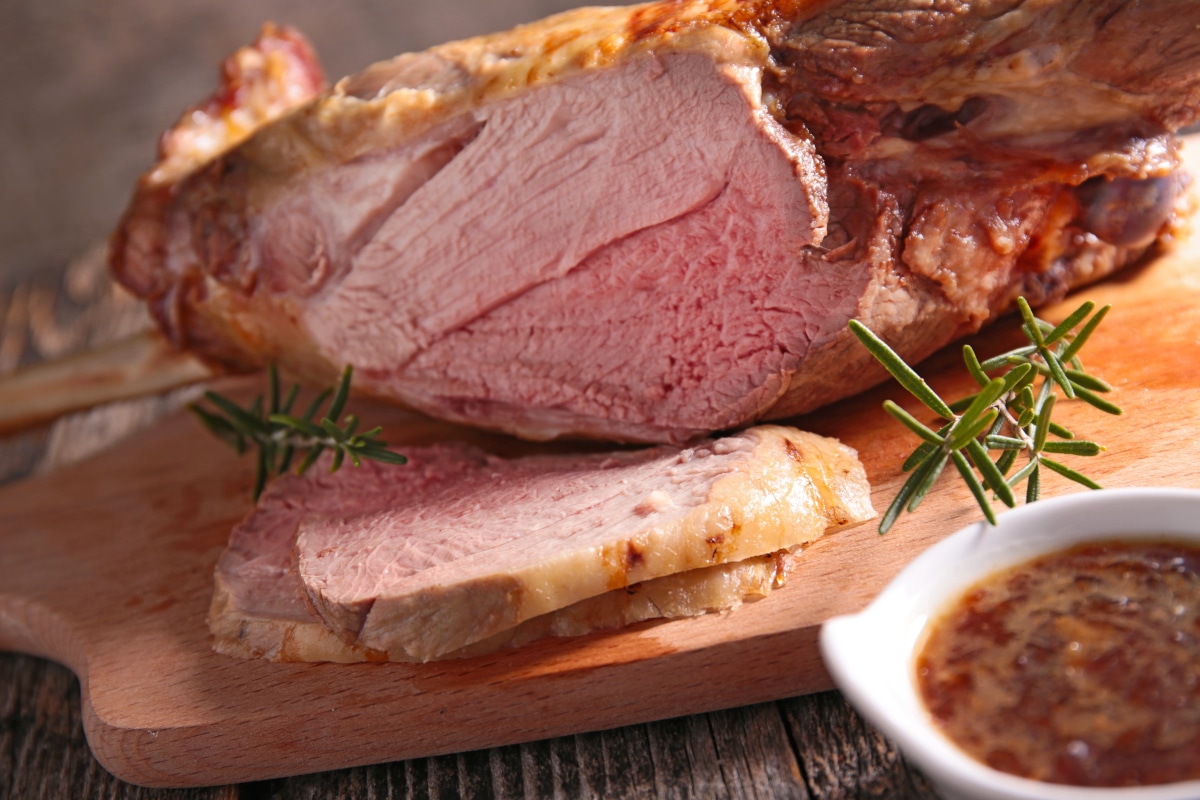
- Carve lamb, against the grain, into ½-inch-thick slices and arrange on a heated platter. Decorate with remaining rosemary sprigs.
Variation
If you want to make a gravy, you can do so from the pan drippings. Following the steps in this gravy recipe will aid you in making a delicious gravy to drizzle over the lamb or on mashed potatoes.
💭 Cook’s Tips
- Always use an instant read thermometer to check the internal temperature of the meat, as this is the most reliable way to ensure that your lamb is cooked to your desired level of doneness.
- Insert a meat thermometer into the roasting lamb 30 minutes before you think the lamb is going to be done. This will help to not overcook the lamb.
- Remove the lamb from the oven 5 to 10 degrees before the desired internal temperature is reached.
- Carve the lamb against the grain.
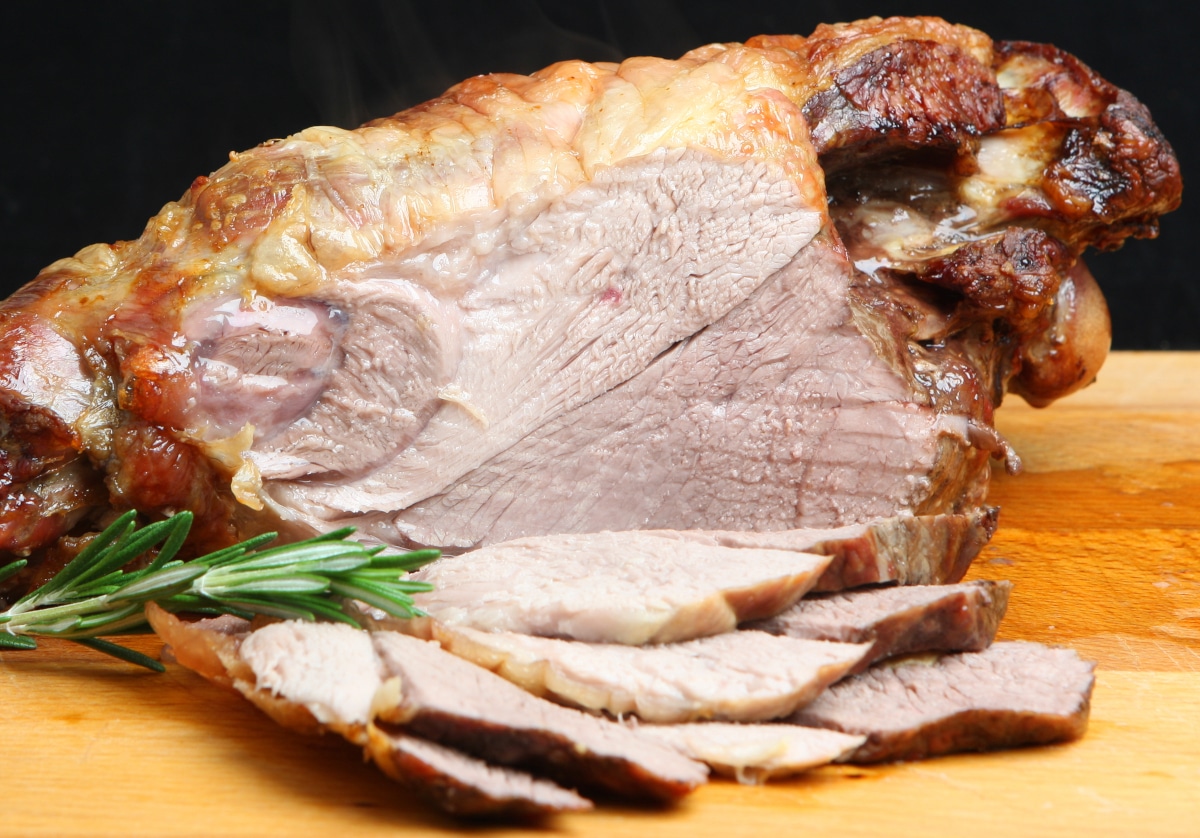
Recommended Lamb Roast Time
All roasting times assume the lamb is approximately 7 pounds and has; come to room temperature before roasting, has roasted at 425°F for 15 minutes, and the temperature is reduced to 325°F.
- For medium-rare lamb: Roast for approximately 15 to 20 minutes per pound, or until the internal temperature of the meat reaches 130 to 135°F. After the lamb rests for 15 minutes, the internal temperature of the lamb should be 140 to 145°F
- For medium lamb: Roast for approximately 20 to 25 minutes per pound, or until the internal temperature of the lamb reaches 135 to 140°F. After resting for 15 minutes, the internal temperature of the lamb should be 155 to 160°F.
- For well-done lamb: Roast for approximately 25 to 30 minutes per pound, or until the internal temperature of the meat reaches 165°F to 170°F.
It’s important to note that recommended time may vary depending on the size and shape of your lamb leg, as well as the accuracy of your oven temperature.
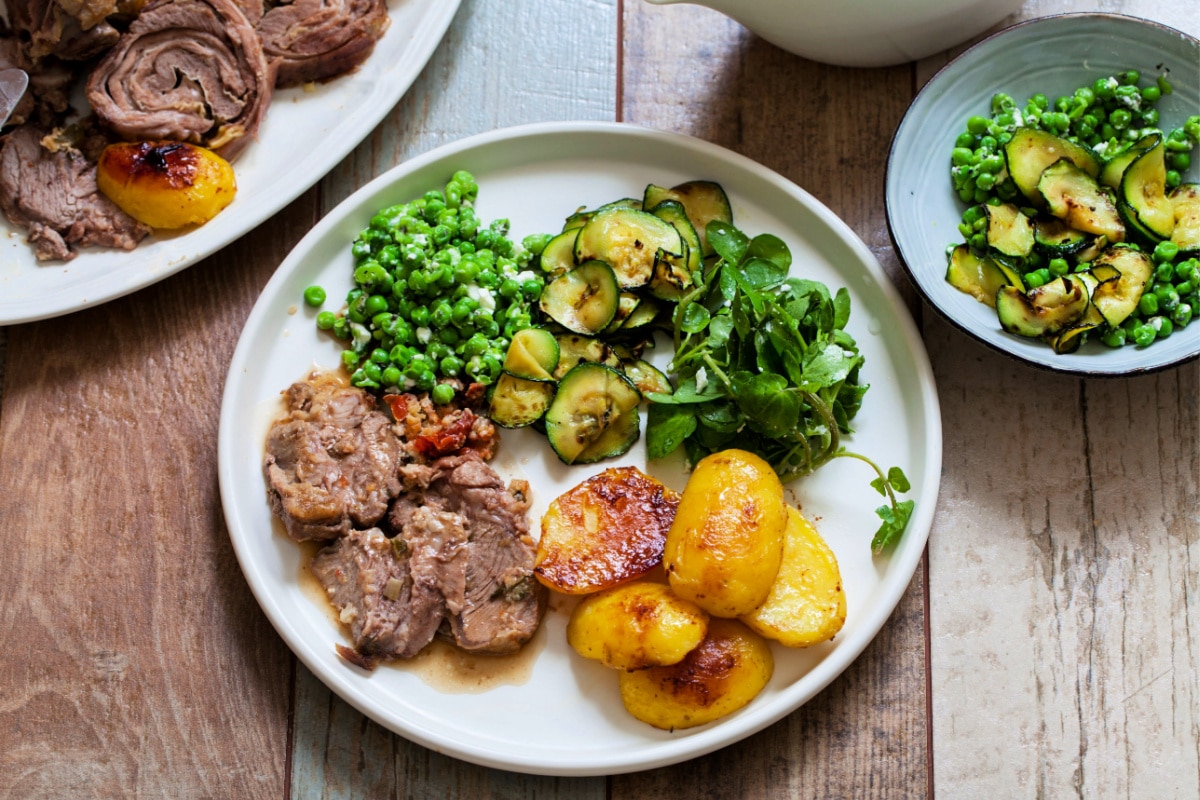
Lamb Roast Temperature
- Medium-Rare Lamb – remove from oven at 135°; final temperature after resting should be 145°.
- Medium Lamb – remove from oven at 150°; final temperature after resting should be160°.
- Well Done Lamb – remove from oven at 160°; final temperature after resting should be 170°.
Letting the lamb rest for 10 to 15 minutes after removing it from the oven and before carving allows the juices to redistribute and the meat to become more tender.
How To Store Leg of Lamb
If you have leftover lamb, there are a few ways you can store it to keep it fresh and delicious for longer:
- Refrigerate: You can store leftover lamb in an airtight container in the refrigerator for up to 4 days. Make sure to separate the meat from any sauces or gravies to prevent them from becoming soggy.
- Freeze: You can also freeze leftover lamb for up to 3 months. Wrap the lamb tightly in plastic wrap or aluminum foil, and then place it in a freezer-safe container or resealable plastic bag. Label the container or bag with the date and contents before freezing.
- Meal prep: If you plan on using the leftover lamb in a recipe later in the week, you can pre-chop or shred it and store it in an airtight container in the refrigerator for up to 3 days.
When reheating leftover lamb, it’s important to do so safely to prevent foodborne illness. Make sure to heat the lamb to an internal temperature of 165°F (74°C) before consuming. You can reheat the lamb in the microwave, oven, or on the stovetop. If you’re reheating the lamb in the oven or on the stovetop, you can add a little bit of moisture, such as chicken or vegetable broth, to prevent it from drying out.
Perfect Roasted Leg of Lamb
Ingredients
- 1 bone-in leg of lamb 5 to 7 pounds
- 6 garlic cloves, peeled and smashed
- 3 tablespoons Dijon mustard
- 9 rosemary sprigs (2 heaping tablespoons leaves from 6 sprigs) plus extra sprigs and branches for garnish
- 1 tablespoon fresh thyme leaves about 10 springs or 1/4 of a bunch
- 2 tablespoons virgin olive oil
- Kosher salt
- Freshly ground black pepper
- 1 lemon cut in half
Instructions
- Preheat oven to 425 degrees Fahrenheit.
- Using a sharp knife, make about 10 to 12 cuts into the fat cap on the top of the leg. Make the cuts deep, but without cutting into the meat.
- Using a mortar and pestle, blend the smashed garlic cloves, 2 tablespoons Dijon mustard, 2 heaping tablespoons of rosemary leaves, and the thyme leaves into a coarse paste. Using your fingers, press paste deeply into the cuts on the lamb leg.
- Combine the remaining mustard and olive oil. Smear this mixture all over the surface of the roast. Season lightly with kosher salt and black pepper. Place the lamb, fat side up, on a rack in a roasting pan. Squeeze the juice from the lemon halves over the lamb.
- Roast 15 minutes. Then, reduce the temperature to 325°F. Roast for about 60 to 90 minutes, about 15 minutes per pound, or until the internal temperature of the meat reaches 130 to 135°F, for medium-rare lamb (for other doneness levels, the cooking times are in the post).
- Remove the lamb from the oven. Tent the roast with foil and let the roast rest for 15 to 20 minutes in a warm place. The internal temperature will rise to about 140 to 145 degrees.
- Carve lamb into 1/2-inch-thick slices and arrange on a heated platter. Decorate with remaining rosemary sprigs.

